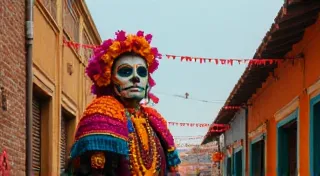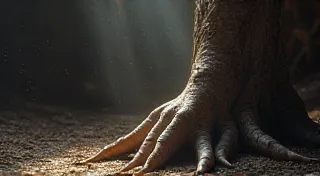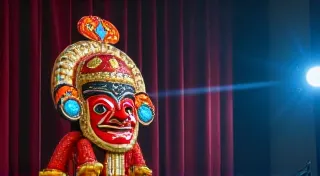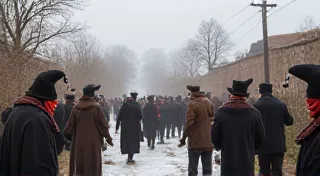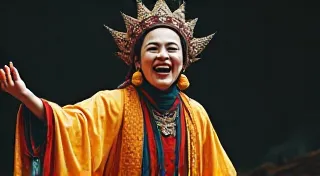Mexican Day of the Dead Masks: Celebrating Life and Remembrance
The Day of the Dead, or Día de los Muertos, is a vibrant and deeply significant Mexican holiday celebrated annually on November 1st and 2nd. It’s a time when families welcome back the spirits of deceased loved ones, honoring their memory with joyous festivities, elaborate altars (ofrendas), and beautiful decorations. A crucial and visually striking element of this celebration is the mask – or, more accurately, the skull imagery that permeates the holiday. While not always strictly "masks" in the theatrical sense, skull representations and painted faces play a vital role in conveying the meaning of Día de los Muertos.
The Significance of Skulls and Faces
The use of skull imagery in Day of the Dead celebrations isn't morbid; it's a symbol of life and death coexisting. It represents the acceptance of death as a natural part of the human experience. The bright colors and joyful decorations surrounding these symbols are a direct contrast to the somberness often associated with grief. They emphasize the idea that the spirits are returning to share in the living's happiness. The painted faces, often adorned with intricate designs and vibrant colors, represent the souls of the departed, welcoming them back to the realm of the living. The profound connection between ritual and representation can be observed in traditions across the globe, and the use of masks in many cultures highlights the enduring human need to connect with the spiritual world, much like the beautifully crafted Balinese masked dances which unveil the spirits through art.

Artistic Techniques & Materials
The creation of Day of the Dead masks and face paint is a rich artistic tradition passed down through generations. Traditionally, artisans use materials readily available, such as:
- Papier-mâché: A classic technique, allowing for the creation of three-dimensional masks.
- Wood: Carved into intricate shapes, wood masks are often lacquered and painted.
- Clay: Molded and fired, clay masks offer a rustic and earthy aesthetic.
- Face Paint: For those participating directly in the celebrations, vibrant colors like orange, yellow, blue, pink, and purple are used. Common motifs include stylized teardrops (representing sadness), flowers (representing life and beauty), and swirling patterns (representing the connection between the living and the dead).
Modern mask-making incorporates these traditional methods while also experimenting with new materials and designs. Some contemporary artists create incredibly detailed and elaborate masks using a combination of techniques. The purpose of masks, and their role in communicating across cultural divides, echoes through centuries and continents. Consider, for example, the powerful symbolism embedded within Ugandan Bwamba masks, representing forest spirits and ancient rituals.
Regional Variations
While the core symbolism remains consistent, regional variations in Day of the Dead mask design exist. In some areas, masks might feature more elaborate headdresses and costumes, reflecting the local folklore and traditions. The colors used may also vary depending on the region's unique cultural heritage. The ways in which communities utilize masks for storytelling and cultural preservation are remarkably diverse. The concept of using masks to portray gods, demons, and heroes isn’s exclusive to Mexico; it’s a practice that has deep roots in traditions like Tibetan opera masks.
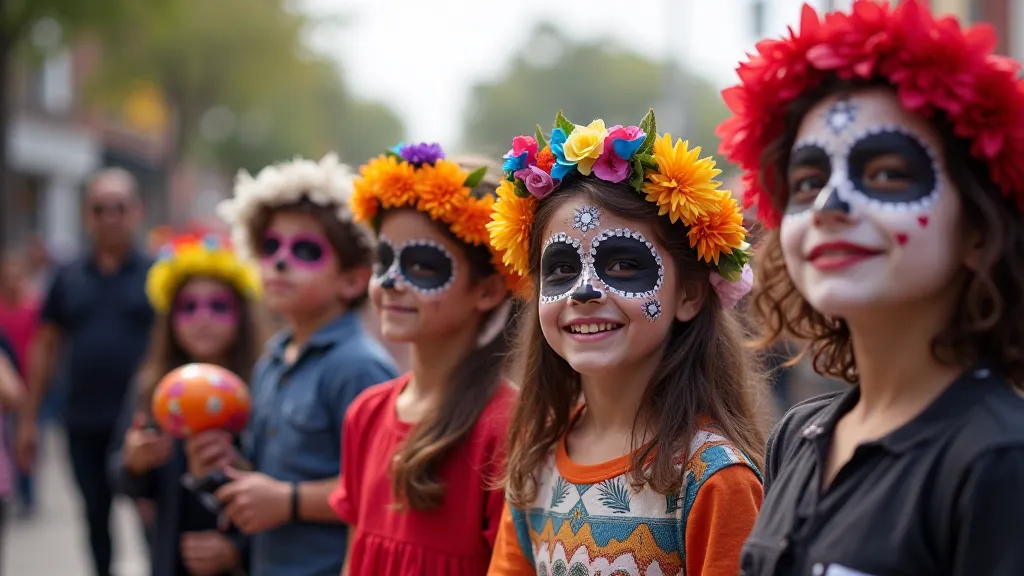
The Connection to Cultural Heritage
The tradition of creating and using masks and face paint during Day of the Dead celebrations is deeply intertwined with Mexico's pre-Hispanic cultures. Indigenous communities had long practiced rituals honoring the deceased, and these practices were syncretized with Catholic beliefs brought by the Spanish colonizers. This blending of indigenous customs and introduced religious practices is not unique to Mexico. Similar cultural fusions can be seen in other regions across the world, where traditions are adapted and reinterpreted over time, often influencing art forms and ceremonial objects. This process frequently leads to the development of unique, culturally significant objects like the masks associated with Day of the Dead celebrations.
The artistry and symbolism involved in mask creation go beyond mere aesthetics; they represent a tangible link to ancestral knowledge and spiritual beliefs. The very act of creating and donning a mask during Day of the Dead is a performance, a ceremonial offering to the spirits of the departed. These rituals are a powerful demonstration of cultural resilience, providing a space for reflection, remembrance, and celebration. The masks used in these ceremonies are not simply adornments; they are conduits to another realm, a visual representation of the boundary between the living and the dead.
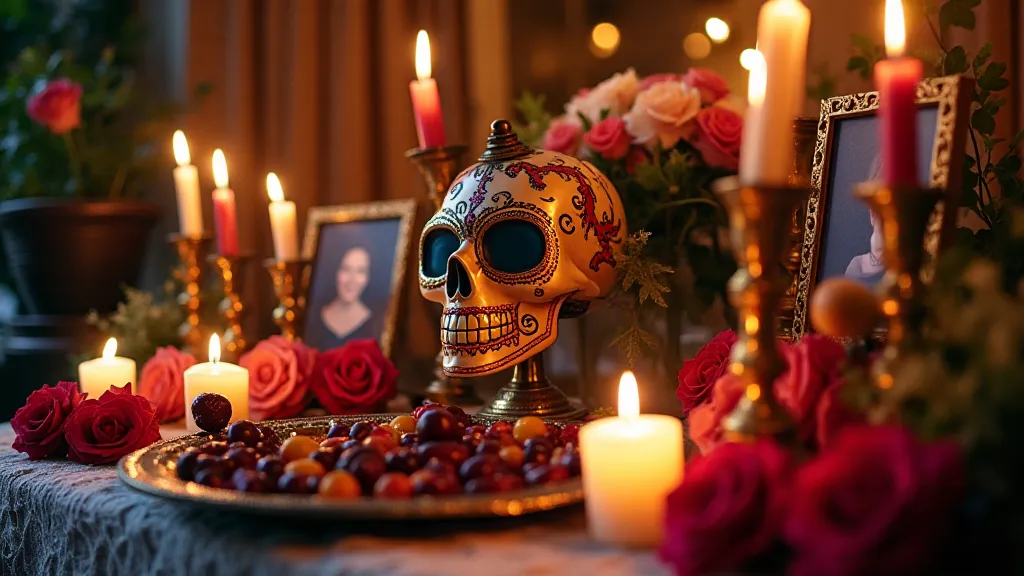
Beyond the Mask: The Psychology of Representation
The enduring appeal of masks lies in their ability to transform identity and create a sense of anonymity. When a person wears a mask, they are not simply covering their face; they are shedding their everyday persona and adopting a new role. This allows for a level of freedom and expression that might not be possible in ordinary circumstances. During Day of the Dead celebrations, the use of masks and face paint allows individuals to connect with the spirits of their ancestors in a meaningful and intimate way. The mask becomes a conduit, a gateway to another realm.
Furthermore, the act of creating and wearing masks provides a powerful means of self-expression and cultural affirmation. The intricate designs and vibrant colors used in Day of the Dead masks reflect the rich cultural heritage of Mexico and the deep reverence for the deceased. These masks are not just decorative objects; they are symbols of identity, resilience, and hope.
Preserving the Tradition
Today, the art of crafting Day of the Dead masks remains a vital part of Mexico's cultural heritage. Efforts are underway to preserve these traditional techniques and pass them down to future generations, ensuring that the vibrant and meaningful celebrations of Día de los Muertos continue to thrive. These efforts involve not only teaching the technical skills of mask-making but also educating younger generations about the cultural significance of the tradition and the stories behind the symbols.
Supporting local artisans and purchasing authentic, handmade masks is another way to contribute to the preservation of this important cultural heritage. By investing in the work of these skilled craftspeople, we can help ensure that the tradition of Day of the Dead masks continues to flourish for generations to come. The power of symbolic objects to convey complex narratives is a universal phenomenon, and appreciating the intricacies of Day of the Dead masks allows us to connect with a vibrant and enduring cultural tradition.
Beyond the immediate celebration, the principles behind creating and appreciating masks can inspire us to explore our own identities and connections to the world around us. The masks of Day of the Dead serve as a potent reminder of the beauty, resilience, and enduring power of human culture.
